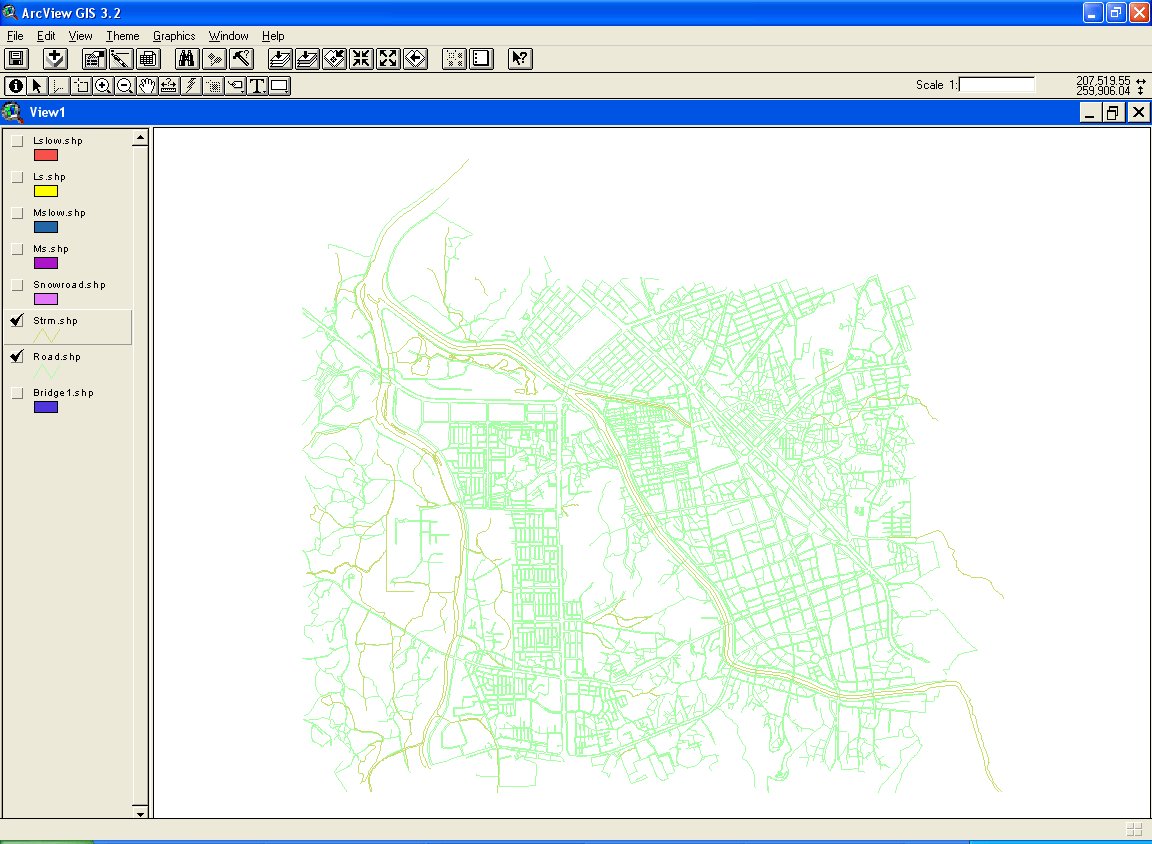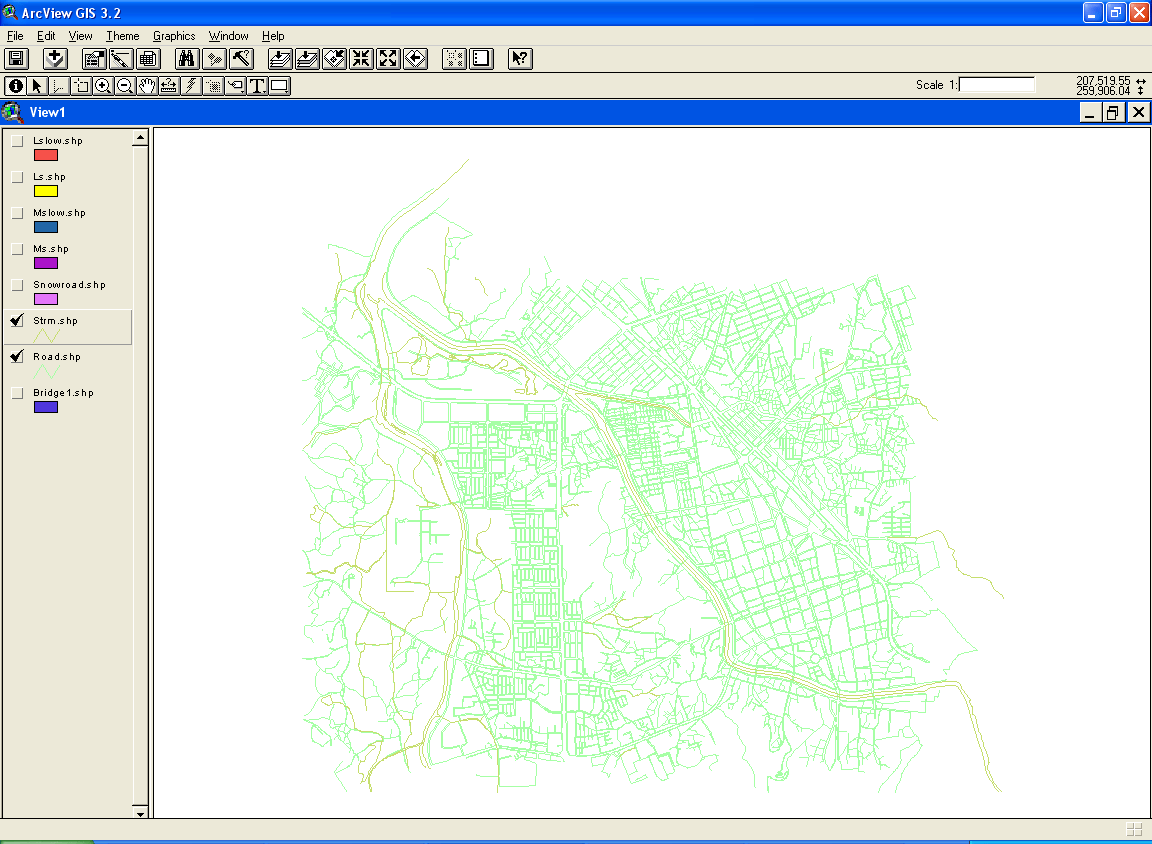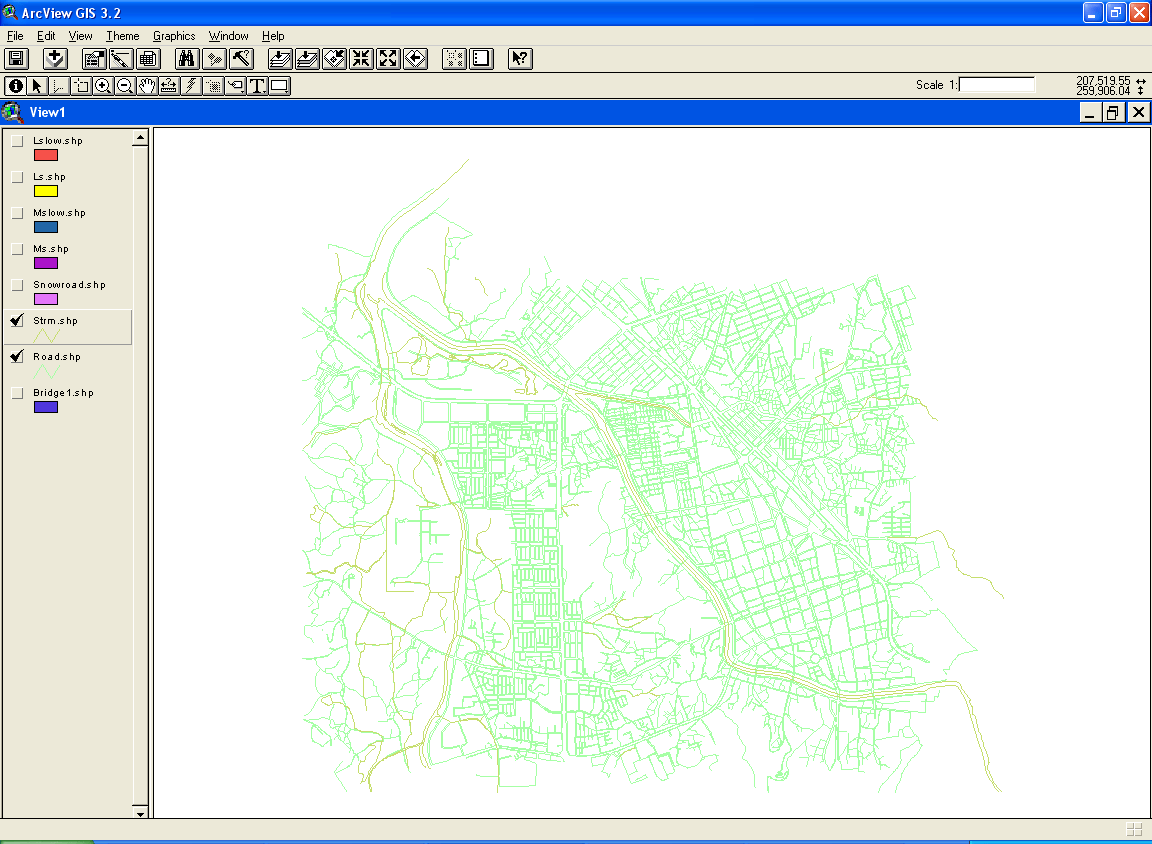III. What order of roads would be the most appropriate
to remove snows for minimizing the inconvience of traffic?
1. Characteristics of Wheather in Winter
Total annual average precipitation is around 1,200 mm in Korea. It is almost same in Jeonju area. About 60% out of total precipitation falls down during summer time which means during June, July, and August. On the contrast, approximately below 10% of total precipitation falls down during winter season. It means it does not snow much or often relatively, compared to raining. Generally, there are around 10 times of snowing of which precipitation is much enough to be removed necessarily for the traffic.
There is a distinct phenomenon of winter
weather in Korea. That is the repetition of 3 days' coldness and 4 day's
warmness. Due to this phenomenon, generally snows does not remain on the
ground longer or at most over 3 days. In addition, it snows usually during
the early morning, when the temperature falls down below 0°C, other
than day time which is generally warm because of the pheonomenon. Therefore,
if it snows, it is very icy in the morning which is a rush hour, even though
it melts soon. That means the most demanded time for snow removing is the
rush hour in the morning.
2. Condtions of work
There are 141 roads in Jeonju city. Out of these roads, 41 main roads which intersect the city and connect each area are managed by the city of Jeonju. The other roads which are relatively local and narrow are managed by the office of districts, which are the sub-administrative branch office of the city of Jeonju. It means the roads that Road Division should manage and remove snow are 41 main roads. Table 3. summarizes the roads based on the reponsibility of management, and Figure 4 show the main roads of Jeonju city.
Table 3.
|
|
|
|
|
|
|
|
|
|
|
|
|
|
|
Figure 4.
For the snow removing, the city of Jeonju has some equipments. Table 4 summarizes the equipments which the city of Jeonju has. However, these equipments are not sufficient. It is because there are not too much and not too often snowing in Jeonju area, and the demanded time is limited to two or three hours in the morning. Therefore, the city of Jeonju thinks it is not cost-effective to have lots of equipments for snow removing, and does not want to spend a lot of budget to remove snow.
Table 4.
|
|
|
|
|
|
|
|
The total time to remove snow on 41 main roads
with these equipment is estimated from the historical experiences. It requires
generally three or four hours or more, even though it varies so much depending
on the amount and the time of snowing. For example, if it snows in the
early morning when the vehicles to commute do not come out on the roads
yet, so the amount of transportation is a little, it takes only about three
hours.
3. Criteria of priority
It is impossible to remove snows on all roads at
one time, because the required equipments are limited as mentioned above.
Therefore, there should be a priority of roads to remove snows on them.
The only thing that should be considered is how the inconvenience of traffic
caused by snow can be minimized. To achieve this purpose, two factors can
be taken account for setting the priority: the amount of transportation
and the degree of dangerous.
And the degree of dangerous can be represented by the
slope of roads. Table 5 show the range of these two factors in the main
roads in Jeonju city.
Table 5.
|
|
|
|
|
|
|
|
|
|
|
|
4 kinds of priority can be chosen based on these
two factors. Each factor is divided into two conditions, which means the
transportation and the slpoe have two conditions each, a little or many,
and steep or slow. Therefore, 4 priorities mean (a little trasnportation
and steep slope), (a little transportation and slow slope), (lots of transportation
and steep slope), or (lots of transportation and slow slope). These priorities
can be applied differently according to the cases described at the following.
4. Case 1: Snowing before 5 a.m. in the morning
If it snows before 5 a.m. in the morning, there may be enough time to remove snows. And there may be some transportation on the roads which has many trasnportation, while there are little trasnportation on the roads of which daily transportation is a little. And, it is requied to remove all the snows before the rush hour begins. Therefore, in this case, the priority can be given to the transpotation instead of the slope. According to this priority, the order of the groups is summarized as Table 6. Figure 5 shows the order of case 1.
Table 6.
|
|
|
|
|
|
|
|
|
|
|
|
|
|
|
|
|
|
|
|
Figure 5.

5. Case 2: Snowing after 5 a.m. in the morning
If it snows after 5 a.m. in thr morning, the time given to remove snow is not enough because the vehicles to commute start to come out on the roads. Therefore, the oder of snow removing should be changed. In this case, it is better to give the priority to the dangerousity to reduce the possibility of serious accidents. In addition, it is also recommended to remove snows on the roads which have lot of transportations as much as possible during the beginning time when the transportation is still a little. So, the order of this case can be summarized as Table 7. Figure 6. shows the order of case 2.
Table 7.
|
|
|
|
|
|
|
|
|
|
|
|
|
|
|
|
|
|
|
|
Figure 6.

6. Case 3: Snowing in the day time
If it snows in the day time, it takes some time for the roads to get icy because snows melt away at the beginning due to the temperature of the roads. The temperatures of the roads get increased above the freezing degree by the traffic. On the contrast, the temperature of the roads which have a little transportation can get decreased easily below the freezing degree. Therefore, in this case, the priority should be given to the roads which have a little transportation and the steep slope. The order of this case can be summarized as Table 8. Figure 7. shows the order of case 3.
Table 8.
|
|
|
|
|
|
|
|
|
|
|
|
|
|
|
|
|
|
|
|
Figure 7.
